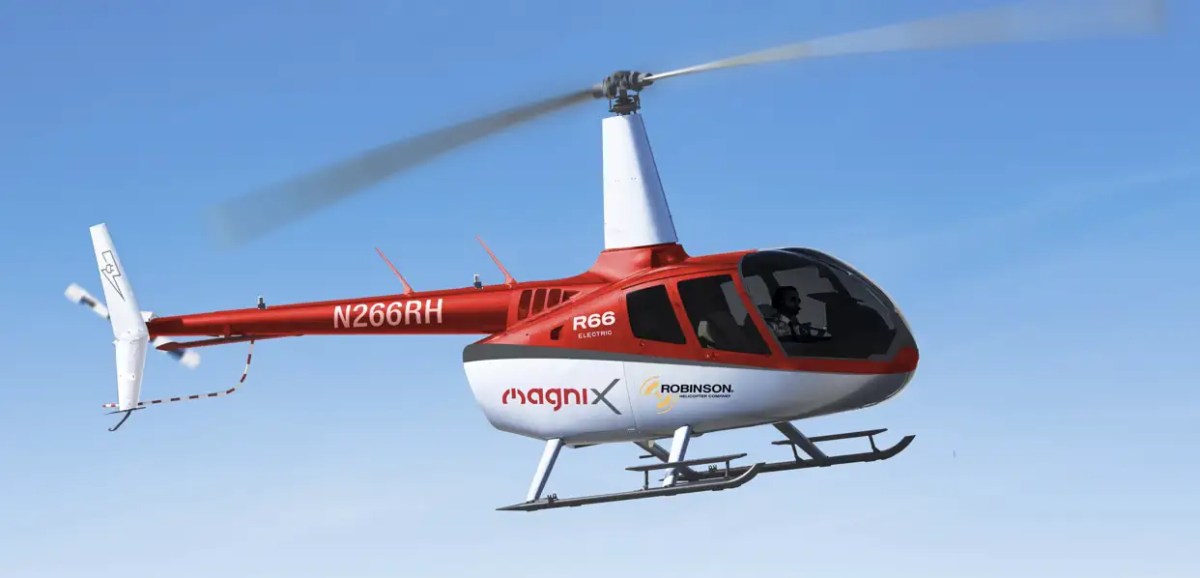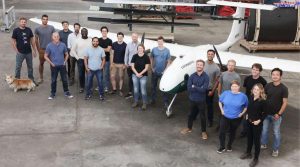Pioneering the Future: magniX and Robinson Helicopter’s Electric R66
The realm of rotorcraft is gearing up for an electric transformation, led by two industry titans: magniX, a leader in electric aviation propulsion, and the renowned Robinson Helicopter Company. Together, they embark on an ambitious initiative to develop a battery-electric version of the legendary R66 helicopter. This exploration delves into the significance of this partnership, project details, technological advancements, and answers pertinent questions for aviators and enthusiasts.
Revolutionary Collaboration
While electric cars have become mainstream, helicopters are now entering the electric era. Announced at EAA AirVenture 2025, Robinson and magniX are crafting a battery-electric demonstrator of the five-seat R66 helicopter, with an anticipated maiden flight by late 2026 [2] [4]. This endeavor is more than a publicity stunt; it marks a pivotal step toward sustainability, cost reduction, and innovation in civil aviation.
Key Highlights:
- Robinson R66: A beloved turbine helicopter known for a decade of reliability, initially powered by a 270 shp Rolls-Royce RR300 turbine [1].
- magniX: Distinguished for electrifying fixed-wing aircraft, expanding to helicopters with its new HeliStorm electric propulsion system [1] [5].
- Main contributors: magniX provides the powertrain and “Samson” batteries; Robinson integrates these with their airframe [4].
- Innovation: The R66 demonstrator represents the first HeliStorm implementation and samson batteries in the vertical-lift sector [1] [4] [5].
Technological Advancements in the Electric R66
HeliStorm Powertrain
- Helicopter-Optimized Design: Distinct from fixed-wing e-motors, HeliStorm operates at 6,000–7,000 rpm, compared to the usual 1,900–2,500 rpm, matching turboshaft characteristics essential for rotary-wing flight [1] [5].
- Output Strength: 300 kW/kg, showcasing a significant leap for lightweight, high-efficiency aviation batteries and motors [1] [4].
- Advanced Battery Technology: The Samson battery features exceptional energy density and lifespan, crucial for demanding flight conditions [4].
- Manufacturing & Integration: magniX assembles flight hardware in its Washington facility, while Robinson handles upgrades at their Torrance, California site [1] [4].
“We are thrilled to collaborate with Robinson to spearhead the helicopter industry’s shift, developing next-generation vertical lift propulsion systems.” —Reed Macdonald, CEO of magniX [4]
Potential Benefits of the Electric R66
While widespread air taxi services remain futuristic, the electric R66 targets:
- Tour and Sightseeing Operations: Most flights last 15–30 minutes, aligning with current battery capabilities. Additionally, quieter flights make cityscapes and park tours more appealing [1].
- Flight Training Institutions: Reduced operational costs and maintenance make electric helicopters ideal for training [1].
- Private Owners: Early “e-heli” adopters are eager to evaluate, drawn by ecological credentials and cutting-edge technology [1].
Distinctive Attributes of the Electric Helicopter Project
- Proven Design with Modern Upgrade: By enhancing an established, market-leading design, magniX and Robinson accelerate entry to market and bolster trust with authorities and customers [1] [4].
- Zero Emissions at Source: Achieves local zero-emission operation for a certified five-seat turbine helicopter, a significant milestone.
- Cost-Effective Operations: Electric motors require less maintenance (fewer components, no oil), and utilize cheaper, cleaner electricity.
- Reduced Noise Pollution: Quieter operations expand potential routes and enhance public acceptance.
The Road to Certification and Market Influence
From Demonstrator to Commercial Success
- The R66 demonstrator serves as a dynamic test platform. Robinson will collect data to refine specifications and fulfill requirements for a certifiable commercial model [1]. Customer insights during demonstration flights will be integral to shaping the mass-production variant and attaining regulatory approval [1].
- Current Market Dynamics: While eVTOL start-ups envision sci-fi air taxi futures, Robinson and magniX focus on traditional strengths: reliability, operational simplicity, and economic viability for established helicopter markets [1].
- Cost Considerations: Expenses such as landing fees, maintenance, and insurance currently inhibit low-cost aerial taxi services, but touring and training sectors stand to benefit [1].
- The battery-electric R66, with its pioneering market entry, could set the standard for sustainable rotary-wing operations by 2027 and beyond.
The Human Element: Teams Behind the Innovation
This venture isn’t just about technical breakthroughs but also passion for aviation’s progression:
- The magniX team comprises seasoned professionals who have enhanced electric aircraft and are now revolutionizing helicopter propulsion.
- The Robinson crew includes helicopter enthusiasts dedicated to their Californian craftsmanship, intent on making affordable flight the new normal.
While many still dream of a “Back to the Future” flying car, insiders recognize helicopter electrification as an essential evolutionary step. Remember the humorous mantra: “Electric scooters are for urban trendsetters. Electric helicopters? That’s for true trailblazers.”
FAQ: Frequently Asked Questions
- Flight Range: Initial versions won’t attempt long-distance journeys—expect flights suitable for 15–30 minute missions (tourism, training, short distances), congruent with existing battery technology, akin to early electric cars with limited range but improving gradually [1].
- Safety and Certification: The electric R66 will undergo extensive flight trials, with user involvement informing certification prerequisites for a production-scale model [1].
- Cost Implications: Maintenance involves minimal moving parts, negligible engine wear, no oil or fuel filter changes. Charging is distinctly cost-effective compared to jet fuel, with additional savings for solar-powered initiatives. Reduced emissions and noise may lead to lowered landing fees and increased regulatory support [1].
- Availability: Demonstrator flights are expected by late 2026. The timeline for commercial availability is contingent on certification progress, with optimistic projections indicating a launch by 2027–2028 for early enthusiasts [1][2][4].
- Is This the Start of a Trend?: Several manufacturers are exploring electric and hybrid vertical aircraft. However, the Robinson–magniX partnership is uniquely focused on electrifying an established mainstream helicopter, not experimenting with radical new designs [1][2][4].
Conclusion: Implications for the Aviation Industry
This collaboration symbolizes both aspiration and innovation. magniX and Robinson are taking definitive steps—supported by tangible hardware, reliable frameworks, and trusted partnerships—to bring the vision of sustainable flight closer to reality. The R66 electric demonstrator is not merely a lab experiment; it’s a genuine contender for scaling emission-free helicopter operations, bridging the gap to market realities.
As aviation enthusiasts gather at EAA AirVenture 2026 for the first all-electric R66 test flight, it will mark more than a small leap for “green helicopters.” It will symbolize a “hover” into the future, forged by optimism, engineering expertise, and a touch of wit. Loyal pilots, eco-conscious operators, youthful visionaries—prepare your cameras and meme-makers. The electric shift isn’t impending. Thanks to magniX and Robinson, it’s already in motion on the helipad.
Stay informed with the latest on the electric R66 and aviation innovations by following updates from magniX, Robinson Helicopter, and prominent aviation events. The advancement of sustainable, accessible rotary-wing flight isn’t just on the horizon—it’s powering up right in the hangar.













